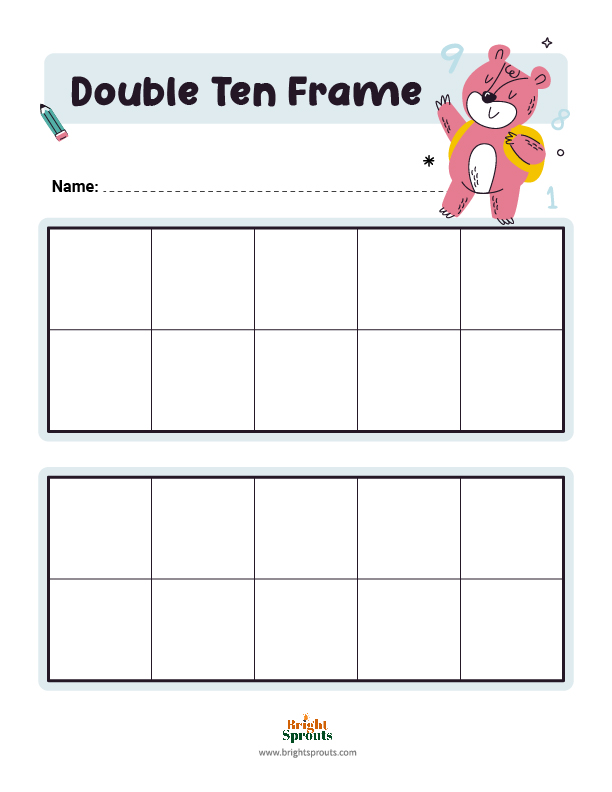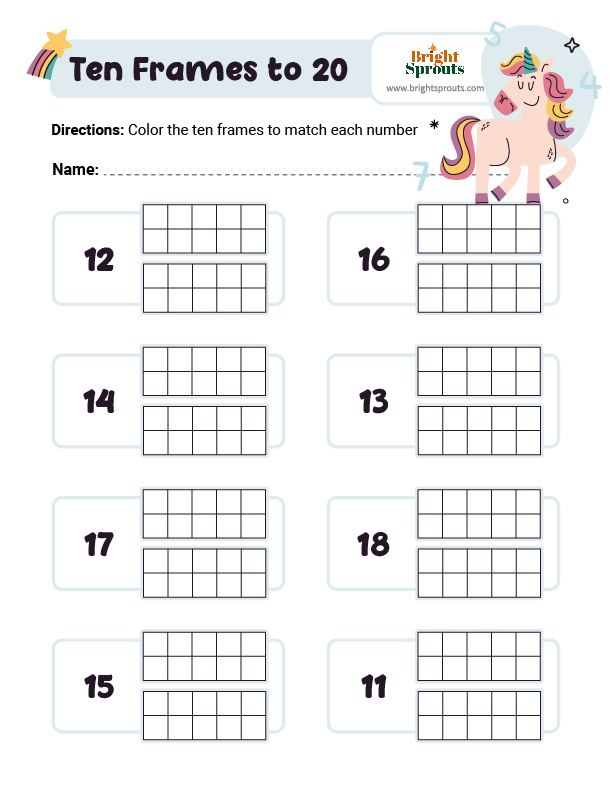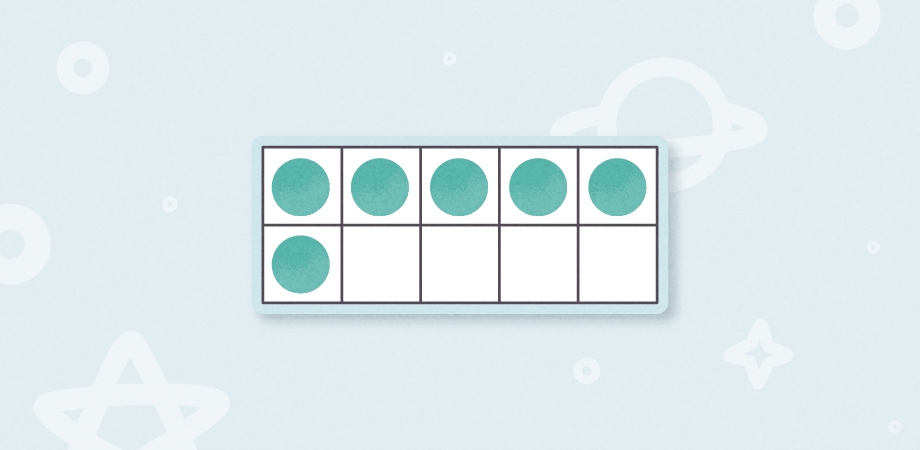Ten frames are a powerful tool in the early elementary math classroom. While we often focus on students memorizing numbers and addition facts, we often don’t spend enough time ensuring that they understand the mathematical concepts.
While recall is important, students need to build a strong foundation in number skills. Good number sense will help them as they move into more challenging mathematics, even into their algebra classes.
Ten frames are one of the easiest ways to help students visualize these concepts and develop their number sense. Below, we’ll discuss why and how to use ten frames in your classroom. Then, we’ll share some free ten frame printables that you can use in a variety of ways.
What Is a Ten Frame?
A ten frame is a rectangle made of five squares across and two squares down. Ten frames are used in kindergarten and first grade to help kids learn the properties of addition concerning the number ten.
Students can use ten frames to work with numbers in a variety of ways. They can use manipulatives like counters inside them or can use stickers or crayons to fill them in. Ten frames are versatile and can be differentiated for students working at different levels.
How Ten Frames Improve Number Skills
Ten frames are deceptively simple, but kids are developing a variety of number skills while working with them. Below are some of the skills kids learn when using ten frames.
- Visualization: On their most basic level, ten frames help kids visualize numbers one through ten and improve counting.
- Modeling addition: Many kindergarten and first-grade classes focus on memorizing addition facts. While kids need to recall math facts, they also need to understand how these operations work. Modeling addition is important, and using ten frames takes it one step further.
- Making ten: Kids develop an understanding of how numbers come together to make ten. It’ll be easier for them to “make ten” when adding, which is an important skill that they’ll use in more challenging addition problems, subtraction, and even algebra.
- Larger numbers: A double ten frame can be used with kids who are ready to add numbers with sums beyond ten. They can visualize larger numbers and figure out how to use ten to add bigger numbers.
- Odd and even: A ten frame can also be used to teach the concept of odd and even. Since kids this age don’t know how to divide, it’s harder for them to understand this concept. Many wind up just memorizing their odds and evens and don’t understand why a number is odd or even until further down the road. A ten frame lets them visualize odds and evens to ten.
- Basic multiplication: A ten frame is essentially an array, and while it isn’t used to teach multiplication skills, it gives kids a foundational concept of multiplication.
Free Printable Ten Frame Templates
Below are some free printable ten frame templates. Feel free to download and print them for use in your classroom.
Basic Blank Ten Frame
This blank ten frame is versatile enough to be used in almost any situation, and you can easily adapt it to suit your needs.

Double Ten Frames
Double ten frames have a variety of uses. Your students can use this one for adding numbers with sums larger than ten, adding three numbers, and using the “make ten” strategy for adding larger numbers. It can also help them visualize place value.

Multiple Ten Frames
This printable has multiple blank ten frames making it handy when your students aren’t using manipulatives and instead are using crayons or stickers. Students can get a lot of practice using one sheet and teachers can use it to assess their progress. With ten sets of frames on the sheet, it can also be used for “make 100” activities.

Ten Frame With Number Sentence
Ten frames help students visualize number sentences. This ten frame printable includes a blank number sentence so students can write out the addition and subtraction modeled. You can use it repeatedly by laminating and using dry-erase markers.

Ten Frames With Addition Number Sentences
These printable ten frames are partially completed. Students will complete the frames with markers, stickers, or other manipulatives and then write the number sentence they modeled.

Five Frame
Ten frames may be too intimidating for younger students. This five frame lets them count and make five. It can also be used for older students who are still struggling with making ten.

Double Ten Frame Problems
As students start working with numbers beyond ten, these ten frames can help them to visualize larger numbers and understand place value. This free printable can also be used as a tool to assess your students’ progress.

Representing Numbers
Ten frames are designed to help students understand the value of a number. They must also learn that there are many different ways to represent each number. This sheet lets them write the numeral and the word, complete a ten frame and then draw pictures representing the number’s value.
Ten Frame Activities for the Classroom
Because ten frames are so versatile, there are so many ways you can use them in the classroom. You may want to print some blank ones, laminate them, and keep them on hand for some of the following activities.
If you use math centers, you can always keep a ten frame center so that kids can practice new skills. You’ll just need to change up the activities. You’ll also want to use ten frames to introduce new concepts and review foundational concepts.
Counting
Kindergarten (and even preschool teachers) can introduce ten frames with basic counting. Most preschoolers know how to count, but many don’t understand that numbers represent values. Kids can use manipulatives to fill in a ten frame as they count.
Addition With Ten Frames
As your students are learning to add, let them use counters or dot markers to add two numbers. They can put them in each square as they count and add. Ten frames are one of the many ways students can model addition. They can also model subtraction and simple multiplication by twos.
Making Ten
Making ten is a powerful skill that helps students understand addition. Once they understand how to make ten, they can quickly memorize all of the ten math facts. They can then use this skill for bigger math problems and it will help with mental math, especially when adding two-digit numbers.
To help your students understand this concept, you can give them two colors of crayons or counters to complete the ten frames. This way, they will be able to see which numbers can fit together to make ten. You can also provide them with a set of ten frames that are partially filled, which they can complete.
Conclusion
A ten frame is a valuable tool to help students understand the value of numbers, addition, subtraction, and more. You’ll be surprised at how often you’ll use them in the classroom.
Ten frames are more than just practice worksheets – they help students visualize numbers in concrete ways. By using ten frames, students will build a strong foundation in number skills.


